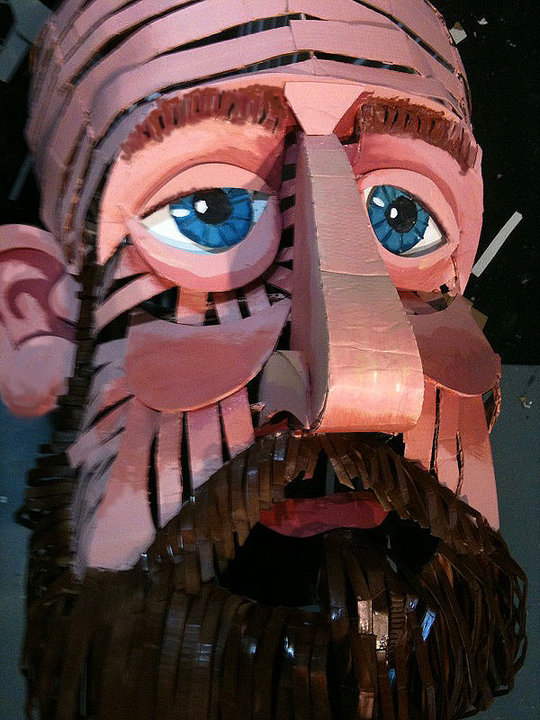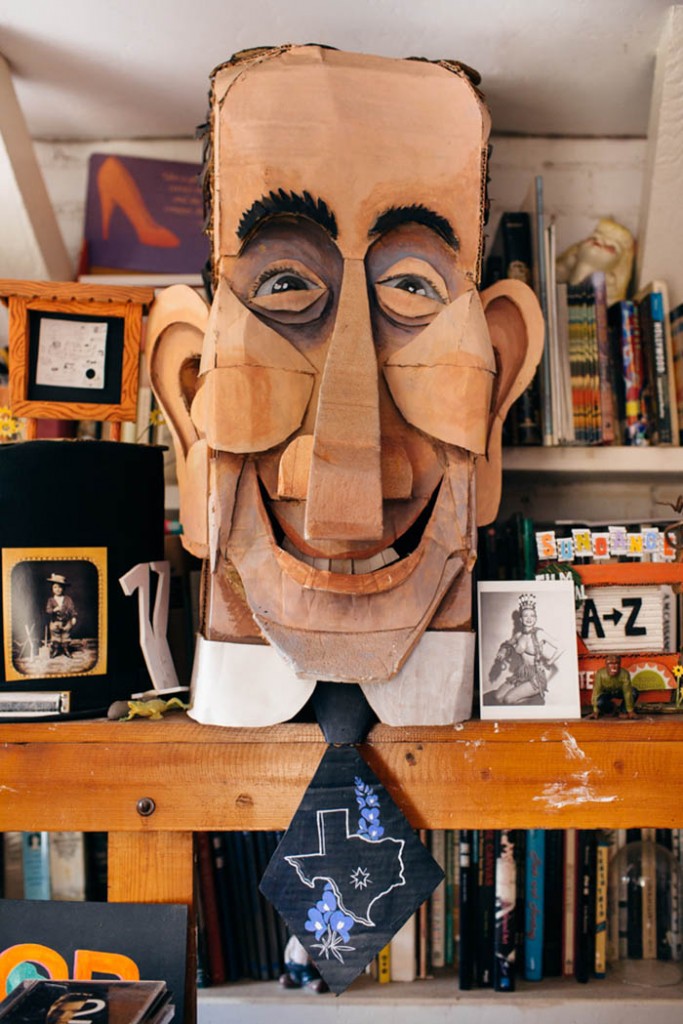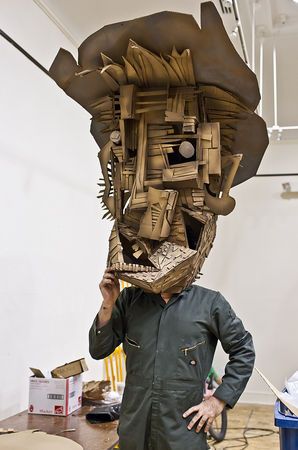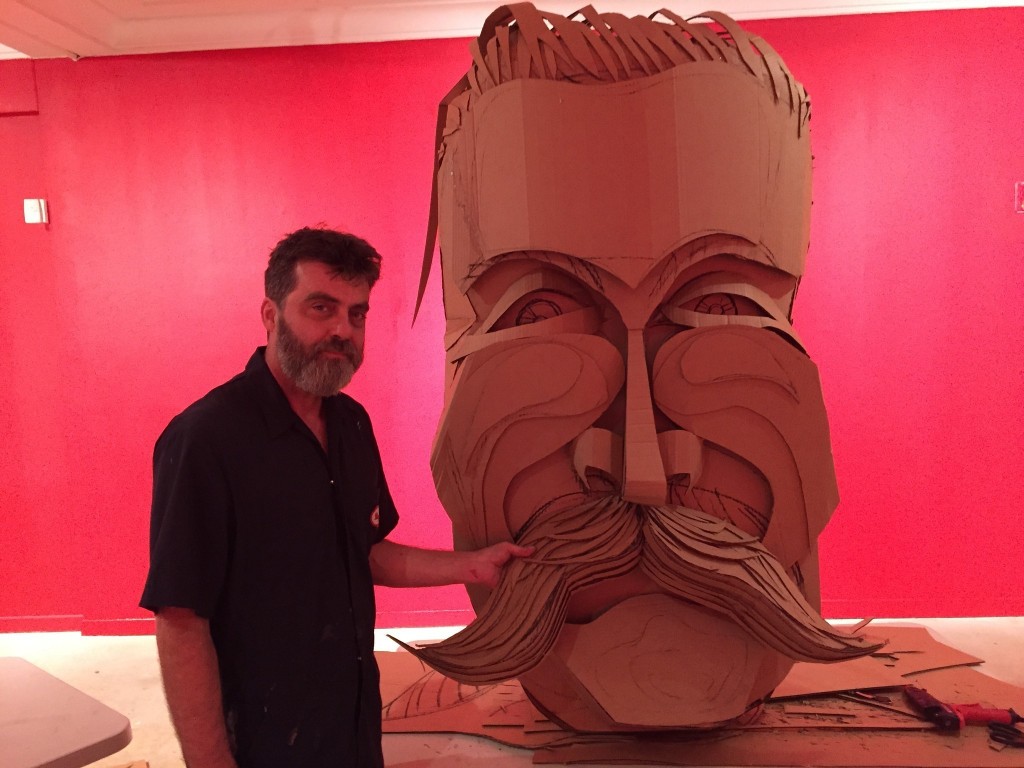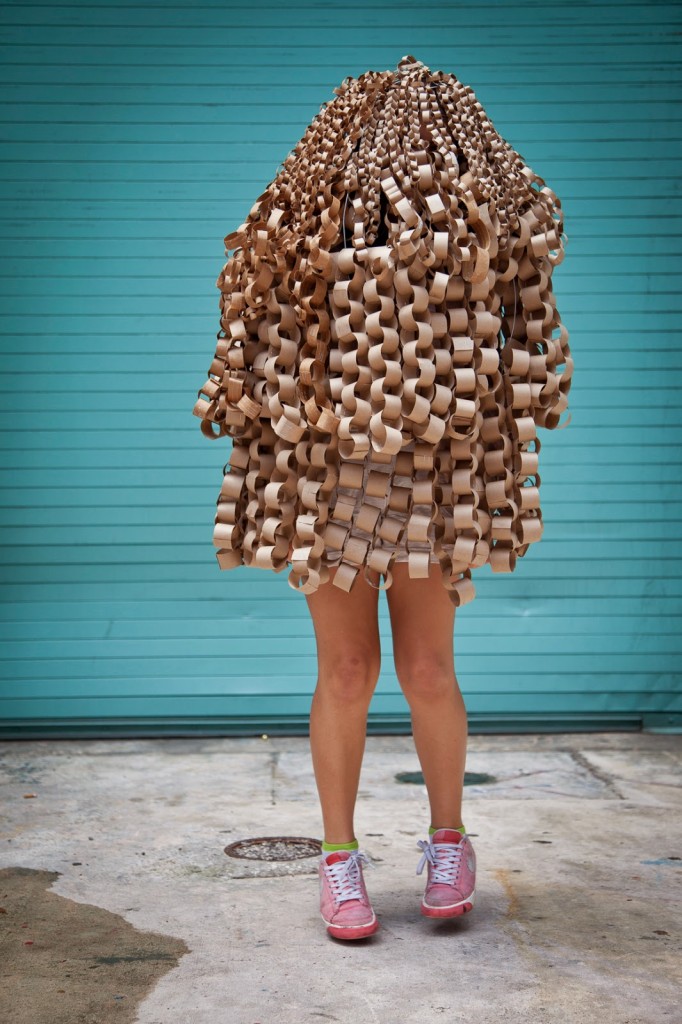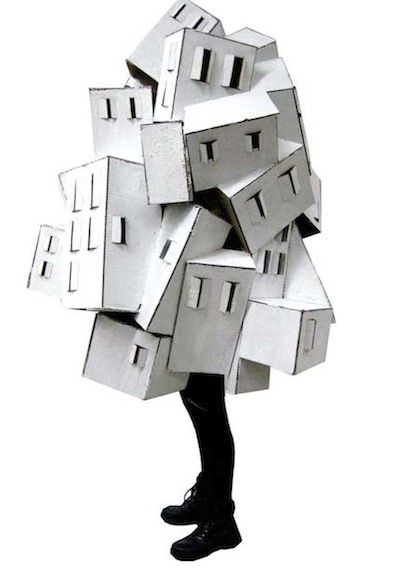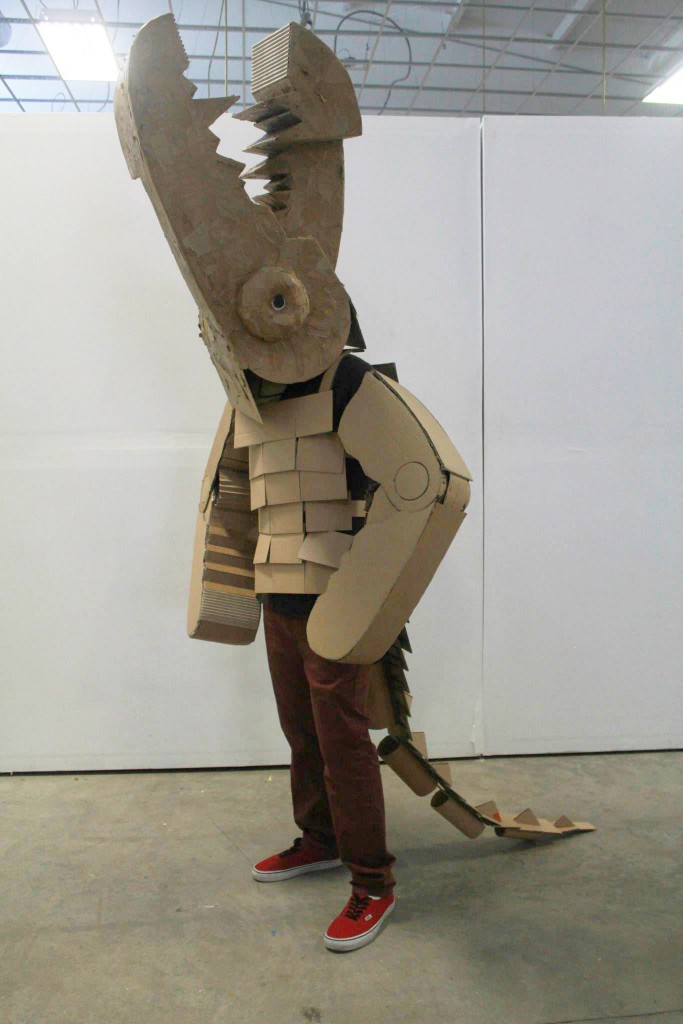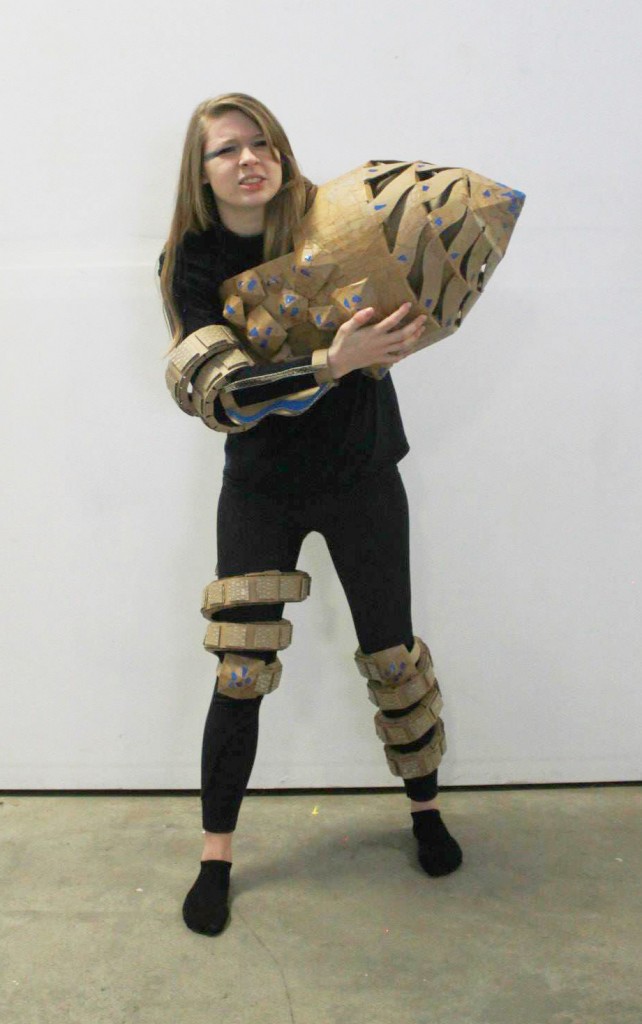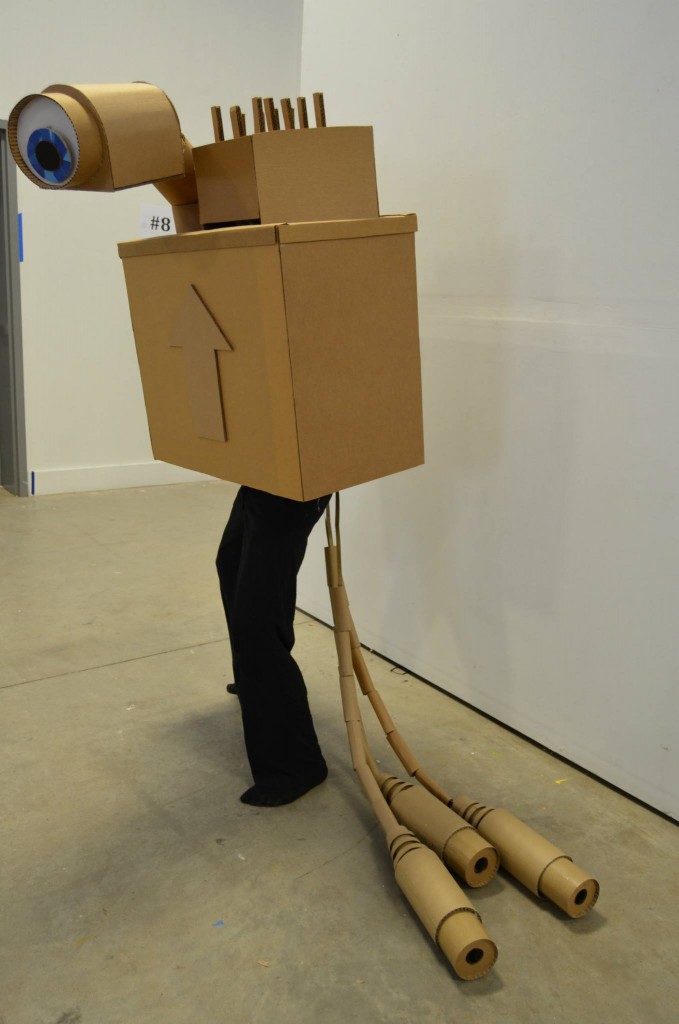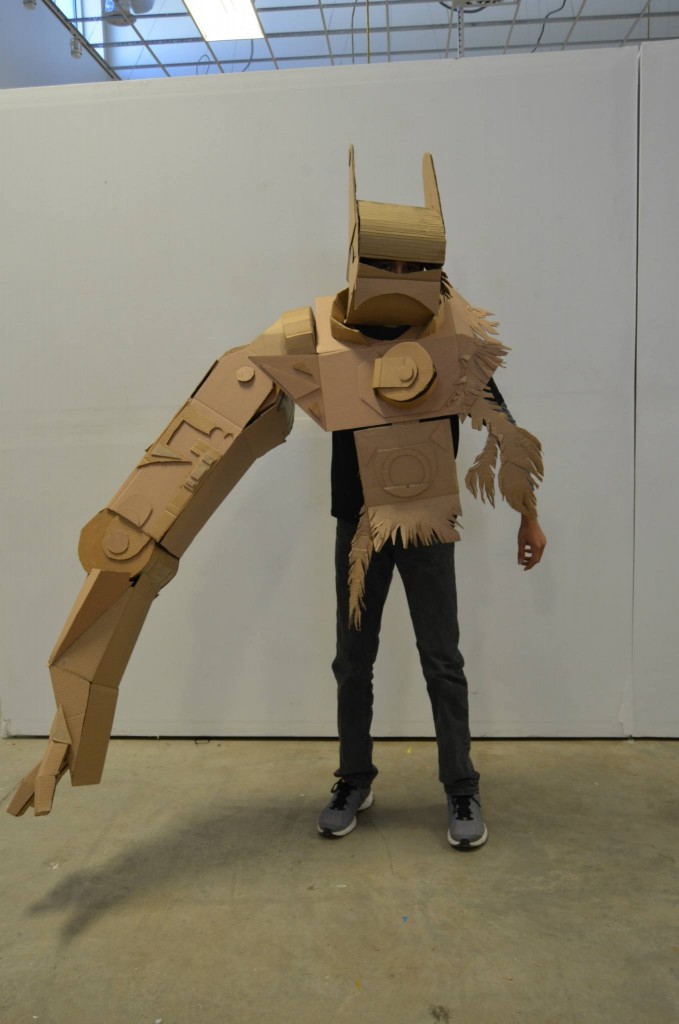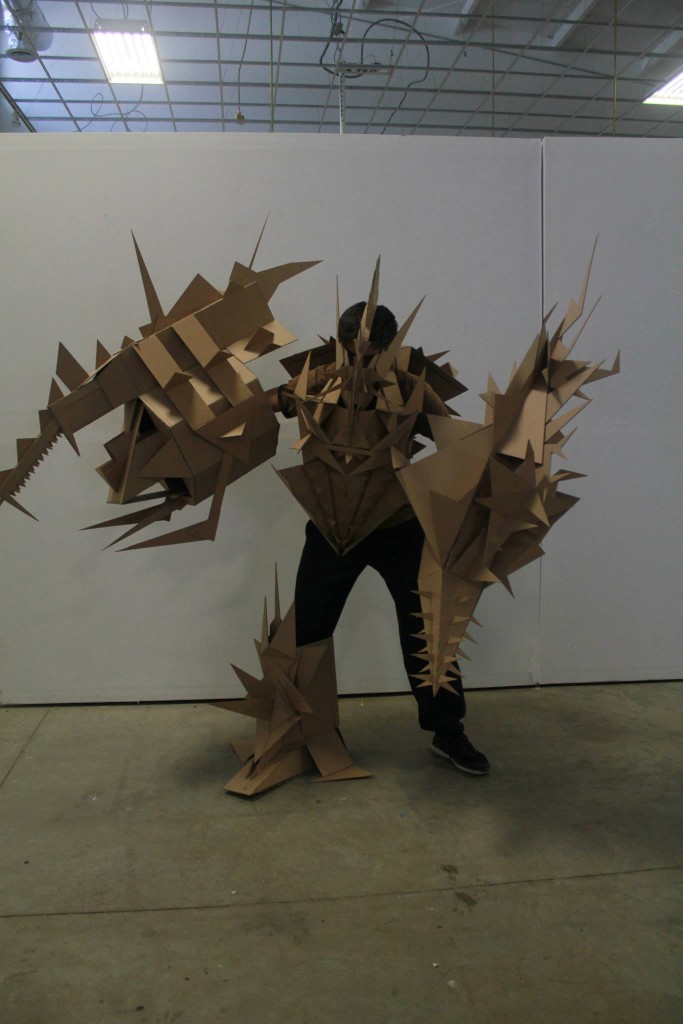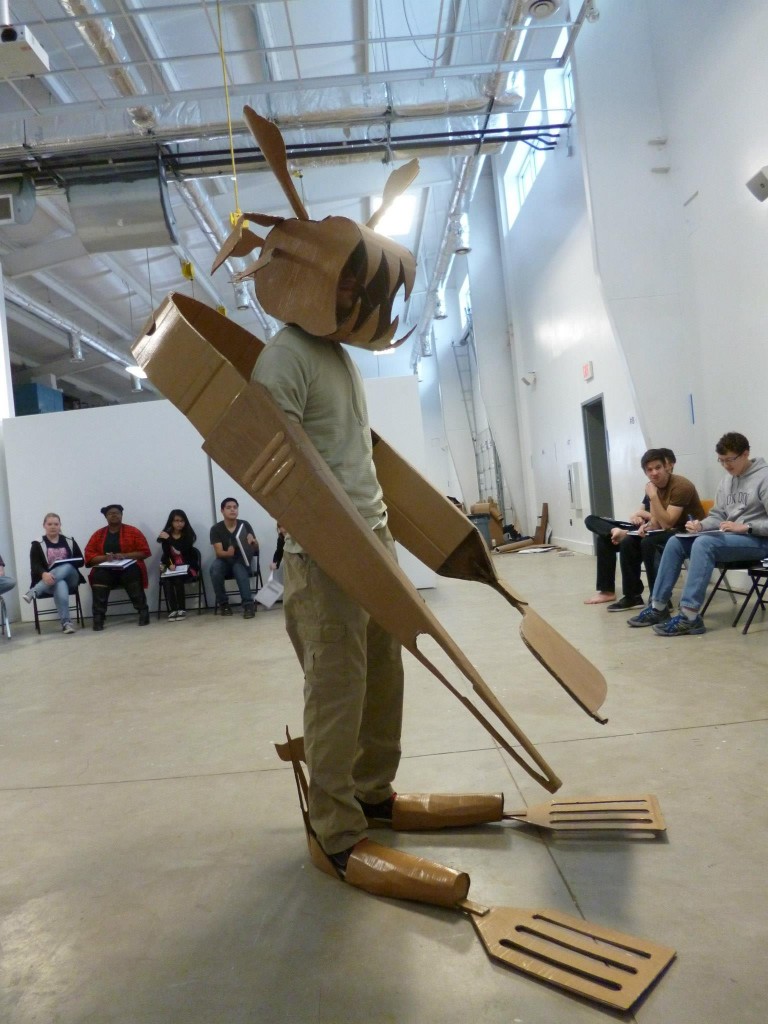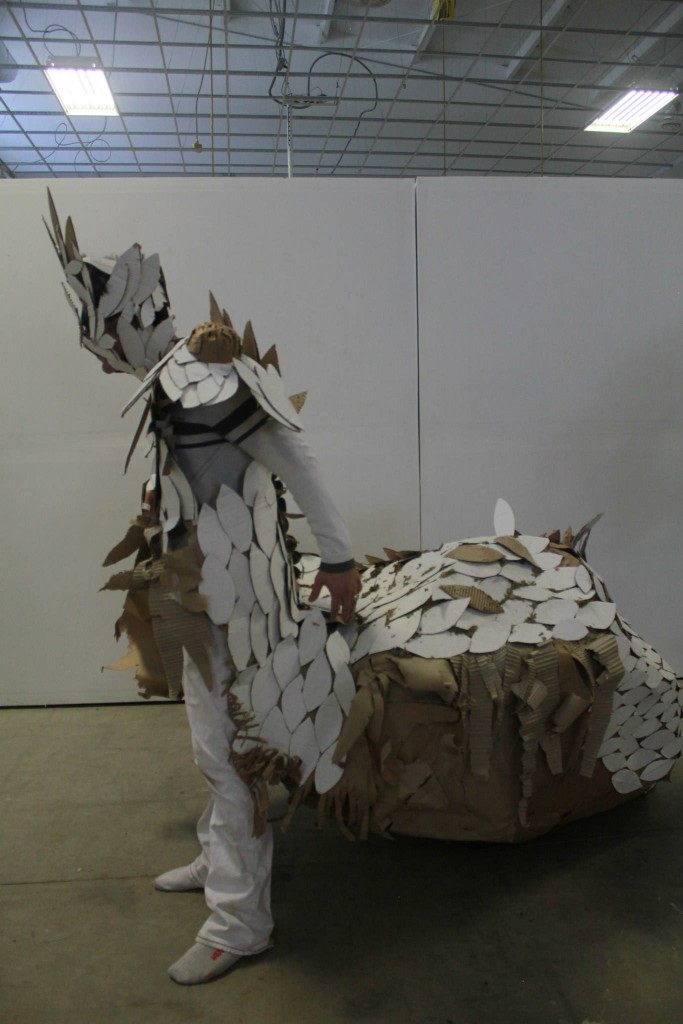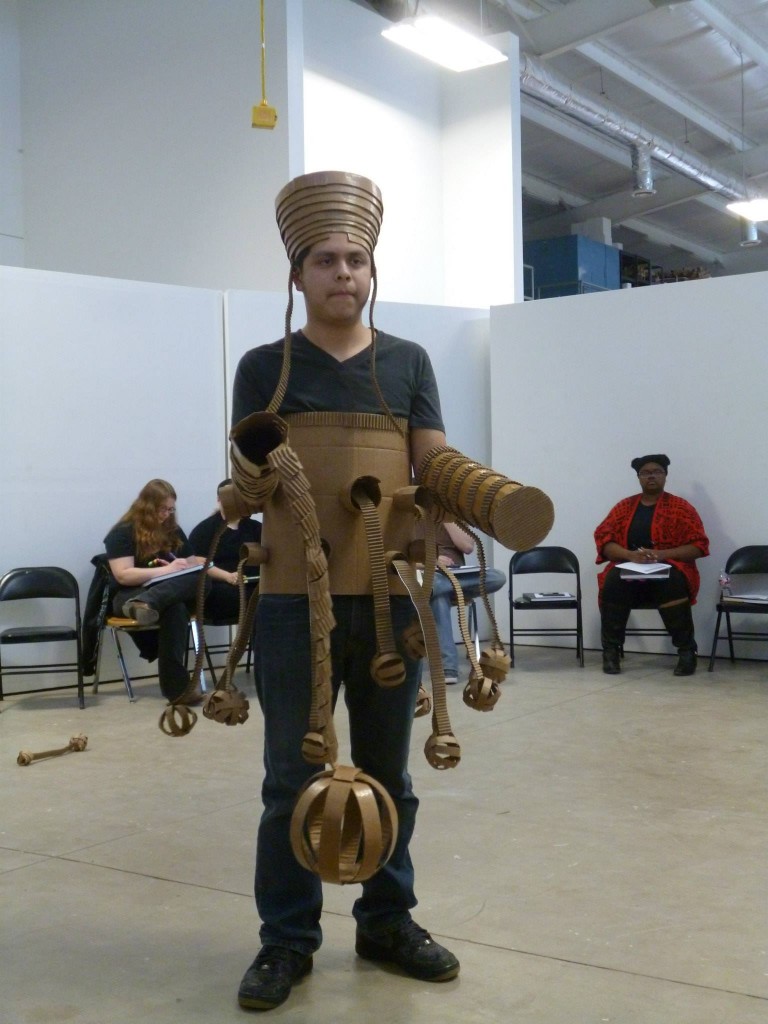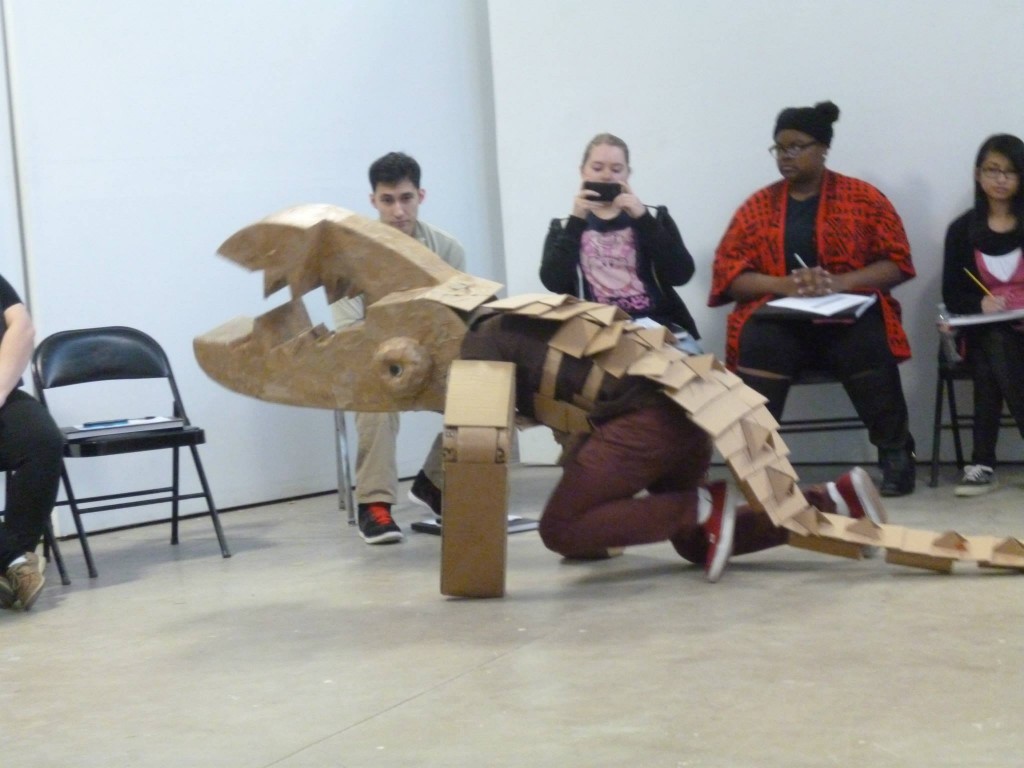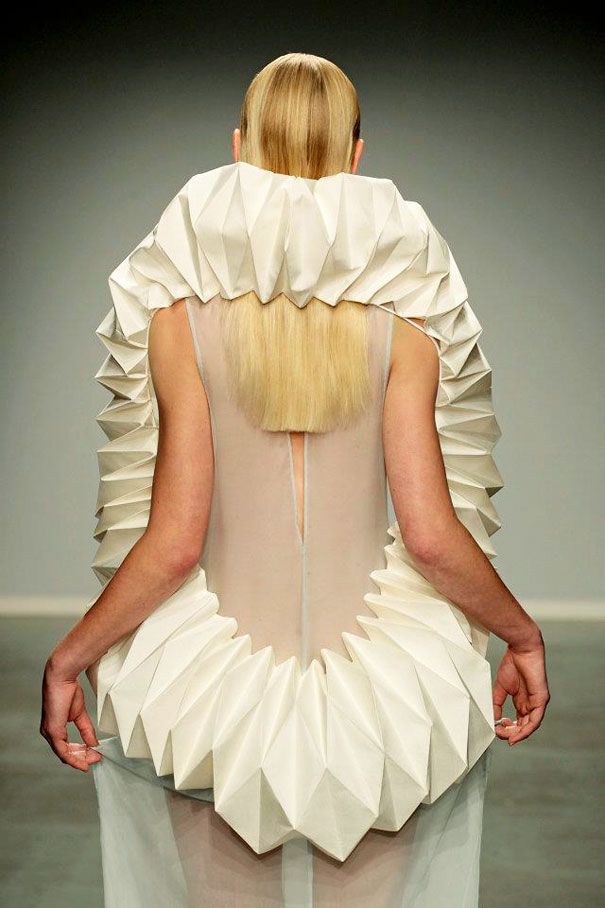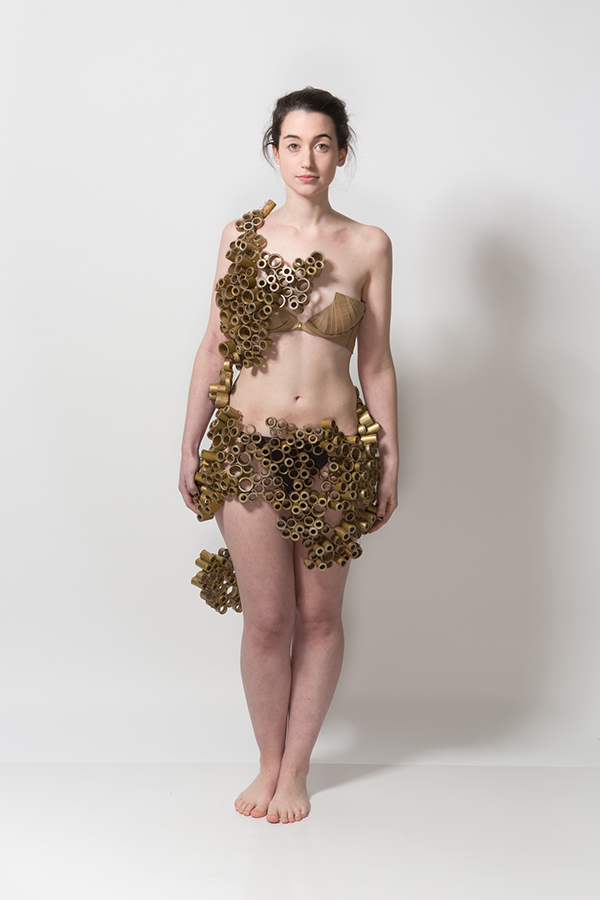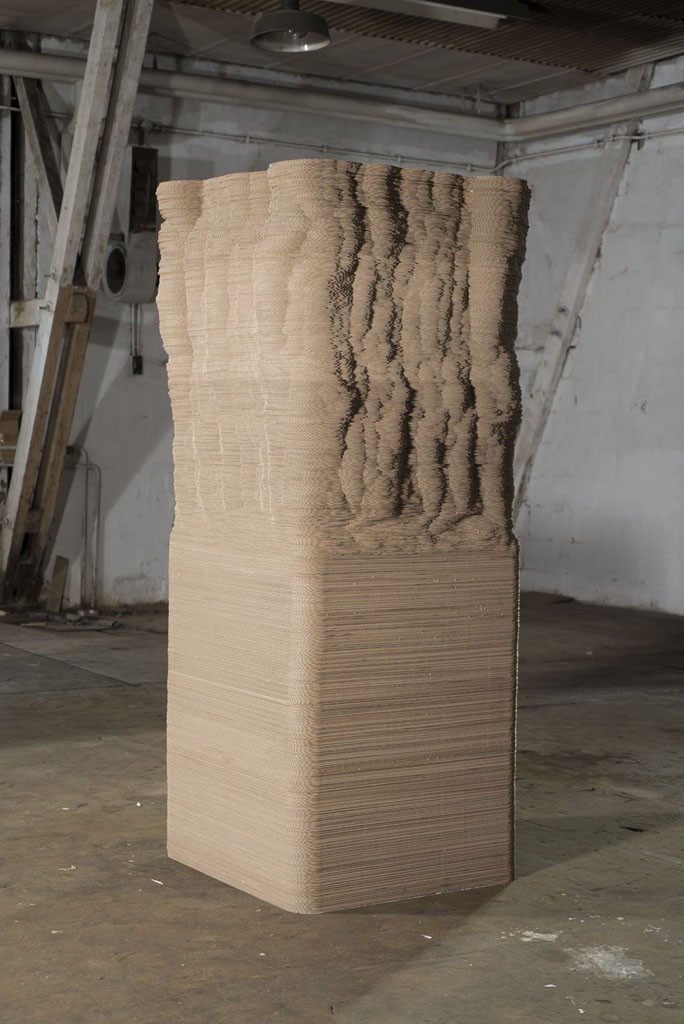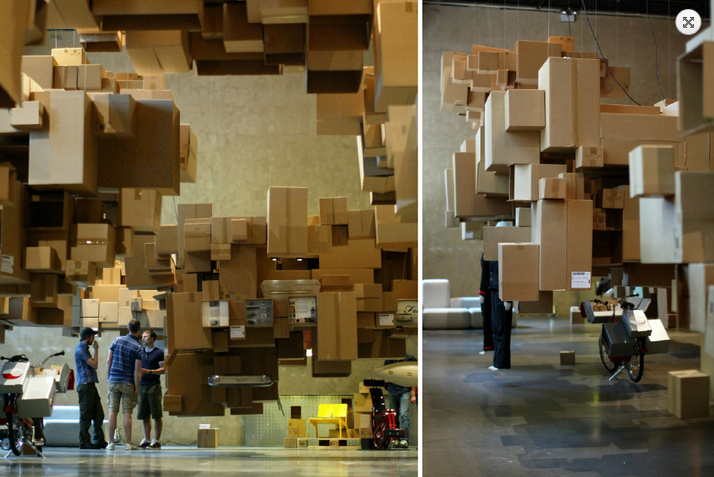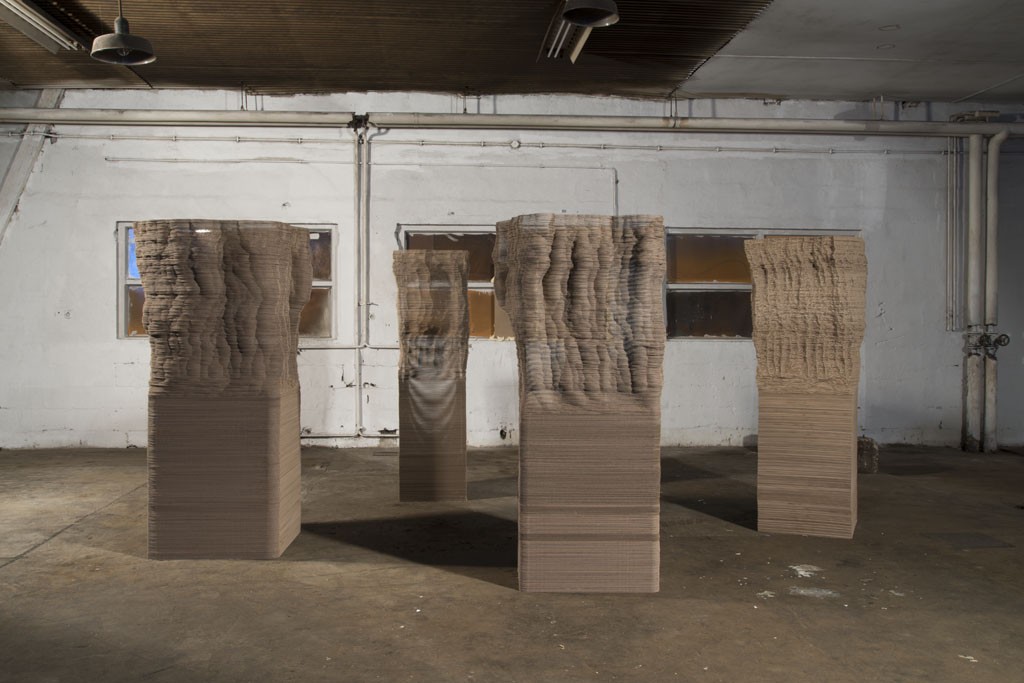Learning Objectives
- Students will be able to demonstrate an understanding of the elements and principles of design, specifically an understanding of form.
- Students will be able to define and demonstrate an understanding of the terminology listed below.
- Students will be able to demonstrate quality craftsmanship.
- Students will be able to demonstrate the process of ideation, sketching and working out ideas and creating the final work.
Info
Create a cardboard sculpture that is placed on your body. This is not a piece of clothing or jewelry, like a hat or glasses, but a sculpture that significantly alters/transforms your body. Clothing might inspire how the sculpture fits the body, but it should be distinctly 3-dimensional, rather than just 2-dimensional cardboard covering parts of the body.
We will have a parade around campus with our wearable sculptures. Since your body is part of the sculpture, think about how your body should move while in this wearable art. It is important to take into consideration the way you move / speak from within it.
You might choose to recreate a historical figure, past or present, a mythological god or goddess or your own persona. You might also make a larger than life version of yourself. I encourage you to explore multiple ideas. Don’t forget accessories – hair, glasses, cape, super long arms…shoes?
Things to consider
- How does the body influence the form of the sculpture and vice-versa?
- How can movement, transformation ‘heighten’ the piece?
- How can you use scale to influence participants/viewers?
- What are the practical concerns/considerations when making a wearable sculpture?
MATERIALS/TOOLS
- Lots of cardboard
- utility / xacto knife
- hot glue gun
- paper tape
- ruler
- scissors (maybe sewing supplies or riveting supplies)
- Paint (acrylic, not spray paint).
Sketchbook Mini-Assignments
- Research / Brainstorm: Find at least 5 artists working in cardboard and / or wearable art that intrigue you. Print off photos of their work in color and put them in your sketchbook or blog about them on your WordPress site. In your sketchbook, create at least 10 thumbnail sketches for 10 different cardboard wearable sculptures. We’ll share this research in class.
- Sketches / Narrowing Ideas: Having heard everyone else’s ideas and research, sketch out 3 ideas in greater detail (devote at least 1 whole sketchbook page to each of these ideas). You will make rough 3D mock-up of one of these 3 ideas out of paper. We will share these refined ideas in class.
Project
- Select idea and begin working: Once you select your idea, you will need to collect cardboard. It may be useful to make another more refined mock-up out of paper to determine patterns for cutting your cardboard.
- Finishing: You may paint your cardboard if you wish but it is not required. Don’t use paint as a way to cover mistakes – it should enhance the work. Acrylic or latex paints from the hardware store work best for this. Spray paint is awful – both in terms of looks, for the environment and for your own body. Avoid it unless it is necessary.
- Final Critique/Parade: We will hold a final critique and parade our sculptures around campus. All projects must be dry and free of fumes.
- Document your work.
- Self-reflection: After the project is over, you will answer the following questions on blackboard to revisit your project and review how you performed. [1.] Discuss your work in terms of the components of an artwork. (subject/form/content/context) [2.] How does the work engage with elements and principles of 3D design? Make sure to mention specific elements and specific principles. [3.] How was your project successful? [4.] How could your project be improved?
Sources of/for Cardboard
Single Wall Corrugated Cardboard: Single layer of flutes (those wavy things) between two layers (called liners) of cardboard, which comes in different thicknesses. Check out the size of the flutes – the smallest flute (somewhere in the middle of the stack) is in a USPS priority mail box.
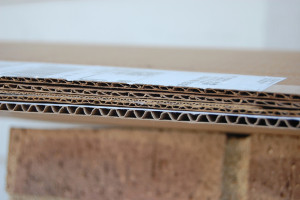
Double Wall Corrugated Cardboard– double layer of flutes
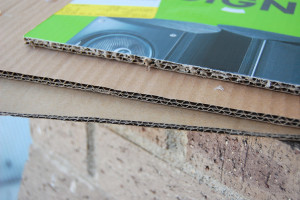
Sources for cardboard
- cardboard recycling container behind the science buildings/library
- cardboard recycling container at Walmart
- talk to the physical plant people to ask if they have any big boxes
- you can order unblemished cardboard from Uline (online company)
Manipulating cardboard
- Cutting: use a box cutter / Xacto and a cutting mat (do not damage tables, floors, or other surfaces)
- Avoid including preexisting creases in your shapes, unless you want them for a particular reason. These are weakened areas in the cardboard.
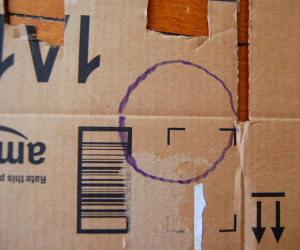
- Folding: use a blunt tool (like the back end of a pen) to score the cardboard to make folding easier; try to fold along the flutes (inner layer) of the cardboard whenever possible
- You want your fold line to be parallel to the flutes- this way you only distort one or two flutes in the fold and the rest of the piece remains strong. If the cardboard is especially thick, you might need to score the fold line first.
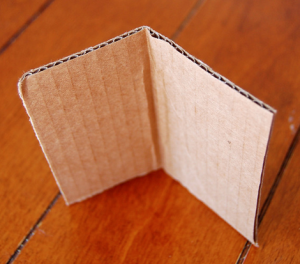
- Rolling: like making a series of gentle bends to attain a curve. Again this is done with the bends parallel to the flutes.
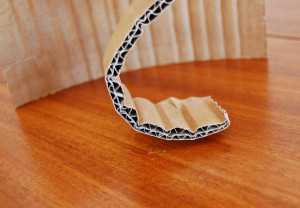
Joining Cardboard
- Gluing: use hot glue (High Temperature – the kind you buy at the hardware store, not low-temp crafters version) or other craft glues to adhere the cardboard together.
- Laminate: (glue together many layers) of cardboard, and then cut them out on a bandsaw or other long blade (BE CAREFUL).
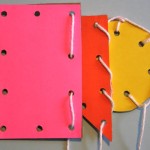
- Sewing/Riveting: sometimes the easiest way to connect two pieces is via sewing, or riveting them together
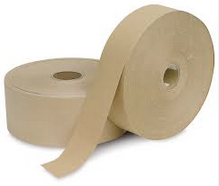
- Taping: if you use tape, use paper tape, NOT plastic packaging tape or masking tape.
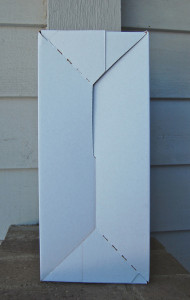
- Assembling Without Glue: If you are working with a cardboard box, you can assemble the usual box-way, for instance, tucking in the flaps.
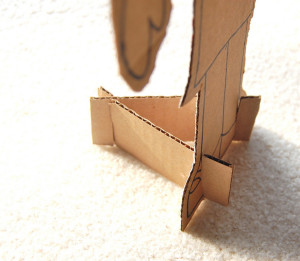
- Joints: You can also make simple slot joints.
Research
